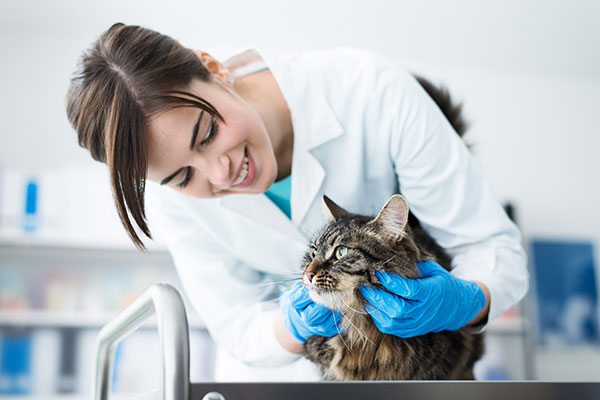
A blood pressure check is one of the first procedures done when you go to the doctor. So it should be no surprise that your veterinarian will likely check your pet’s blood pressure, too!
It is becoming more and more common for vets to regularly check blood pressure at every checkup. However, many pet owners do not realize that their pet’s blood pressure is constantly changing in response to many factors. Being aware of these factors and ensuring that your pet is comfortable in its environment will help the vet to get the most accurate blood pressure reading. Here is a list of 5 factors that may cause significant changes in your pet’s blood pressure:
- Not Resting 5-10 minutes - The first step in acquiring an accurate blood pressure measurement is allowing the patient to acclimate 5-10 minutes in a quiet room. Many animals feel anxious when they go to a new place so it is important to give your pet time to relax and get comfortable. Being in the room with your pet can help reduce their stress and anxiety
- Blood Pressure Cuff is too Small – In order to get an accurate blood pressure reading, the blood pressure cuff must be the correct size for the animal. The cuff used for a Great Dane will be much larger than the one used for a tiny kitten! Using the wrong size blood pressure cuff is easily avoided by referring to the range indicators on the cuff. Studies have shown that using too small of a blood pressure cuff can cause a patient's systolic blood pressure measurement to increase by 10 to 40 mmHg.
- Incorrect Cuff Placement – Whenever possible, the cuff should be placed so that it is at the same height as the animal’s heart. For every inch above or below heart level, systolic blood pressure can increase or decrease by 2 mmHg. The most common place for a cuff is around the animal’s forelimb. Another option for cuff placement is around the base of the animal’s tail. During the measurement, large dogs should be lying down or seated with their paw held at heart level. Cats and small dogs can lie on the exam table or be held by their owner.
- Emotional State - Much like in humans, if an animal is stressed or anxious their blood pressure will be higher. The vet’s office can be a scary place for a dog or cat, but owners can help by petting and talking to their animal. Another tip for reducing stress at the vet’s office is to minimize the amount of time spent in the waiting room. Many vets will understand if you’d like to wait outside if it is quieter and less stressful for your pet.
- Full bladder – Be sure that your pet empties his or her bladder prior to the vet exam. Blood pressure is lower when the bladder is empty. Studies have shown that systolic blood pressure measurements could increase 10 to 15mmHg when the bladder is full.
All of these factors can have an impact on your pet’s blood pressure reading. In order to avoid a misdiagnosis of hypertension, it is important that veterinarians follow the ACVIM guidelines for the identification and evaluation of hypertension in dogs and cats. Pet owners play an important role, too. You can improve the accuracy of your cat or dog’s blood pressure reading by helping to provide a calm and supportive environment for your pet.